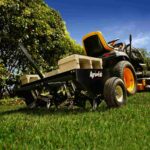
St. Augustine is a popular type of warm-season grass, especially around the gulf coast. The beautiful blue-green color, its resilience to salt, and its tolerance heat set it apart from other types of grass. However, it’s helpful to keep in mind the pitfalls of planting St. Augustine grass in Hammond, LA.
Chinch Bugs
The southern chinch bug will occasionally dine on zoysia grass, bermuda grass, and other warm-season grasses, but it prefers St. Augustine. Damage from chinch bugs will appear as irregularly shaped sections of dying or dead grass. Watch your lawn for these brown patches with a ring of yellowing grass around them. These shapes will expand and eventually devour your entire yard.

Fungus
St. Augustine is susceptible to many types of lawn fungus, including Brown patch, Fairy rings, and Dollar spot.

The best way to treat brown patch is to prevent it. Begin by watering your lawn in the morning, giving the excess water time to evaporate. Don’t water too frequently (a depth of 4 to 6 inches should be plenty.) Avoid nitrogen-rich fertilizers and make sure to aerate your lawn.
Quick Spreading
St. Augustine grass spreads quickly throughout your lawn, filling in patchy areas and keeping your yard looking lush and healthy. However, this quick-spreading grass doesn’t know when to quit. It may be challenging to keep the St. Augustine out of your flower beds.

Need help choosing the right grass for your lawn? Visit our Hammond lawn care page for more information!





